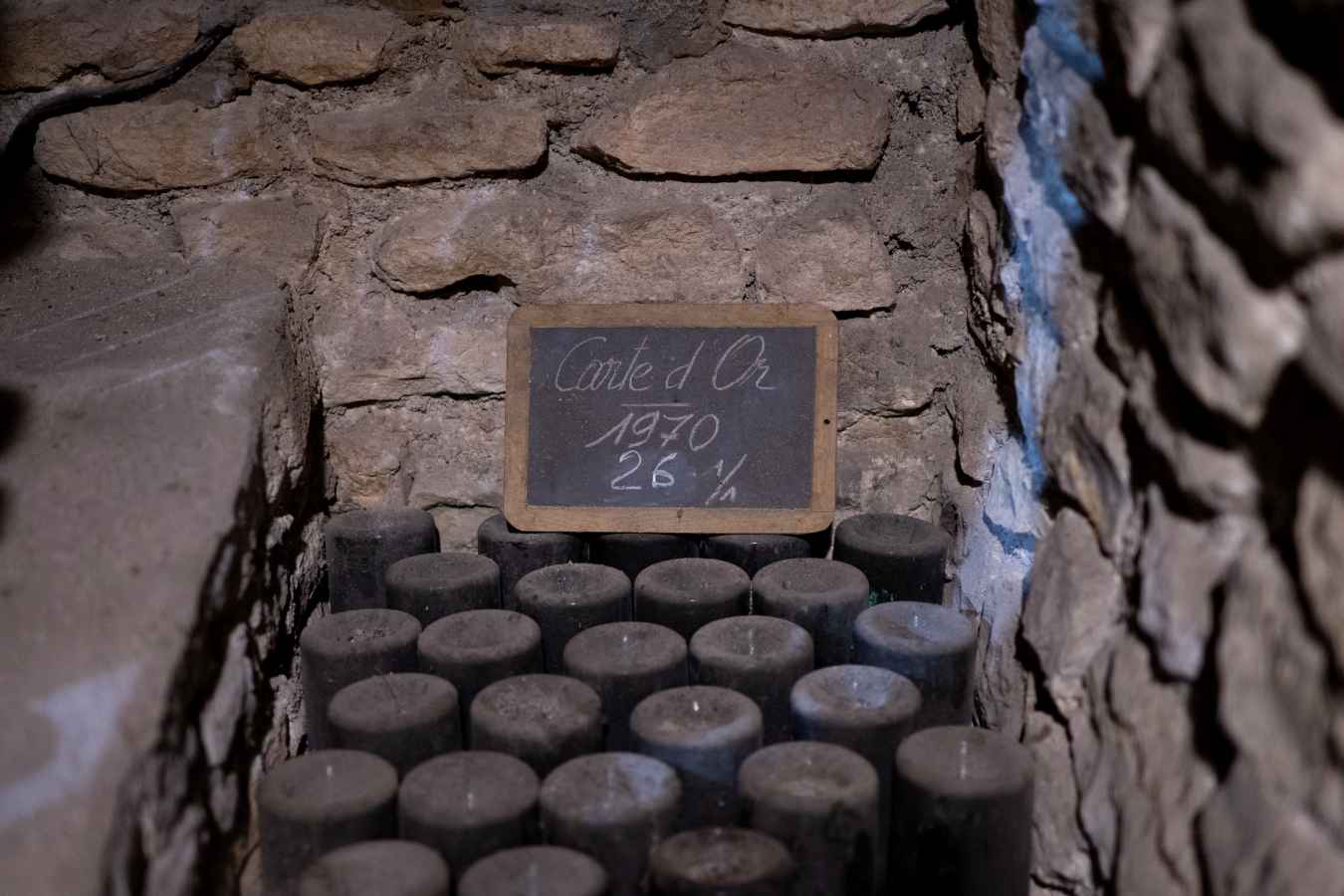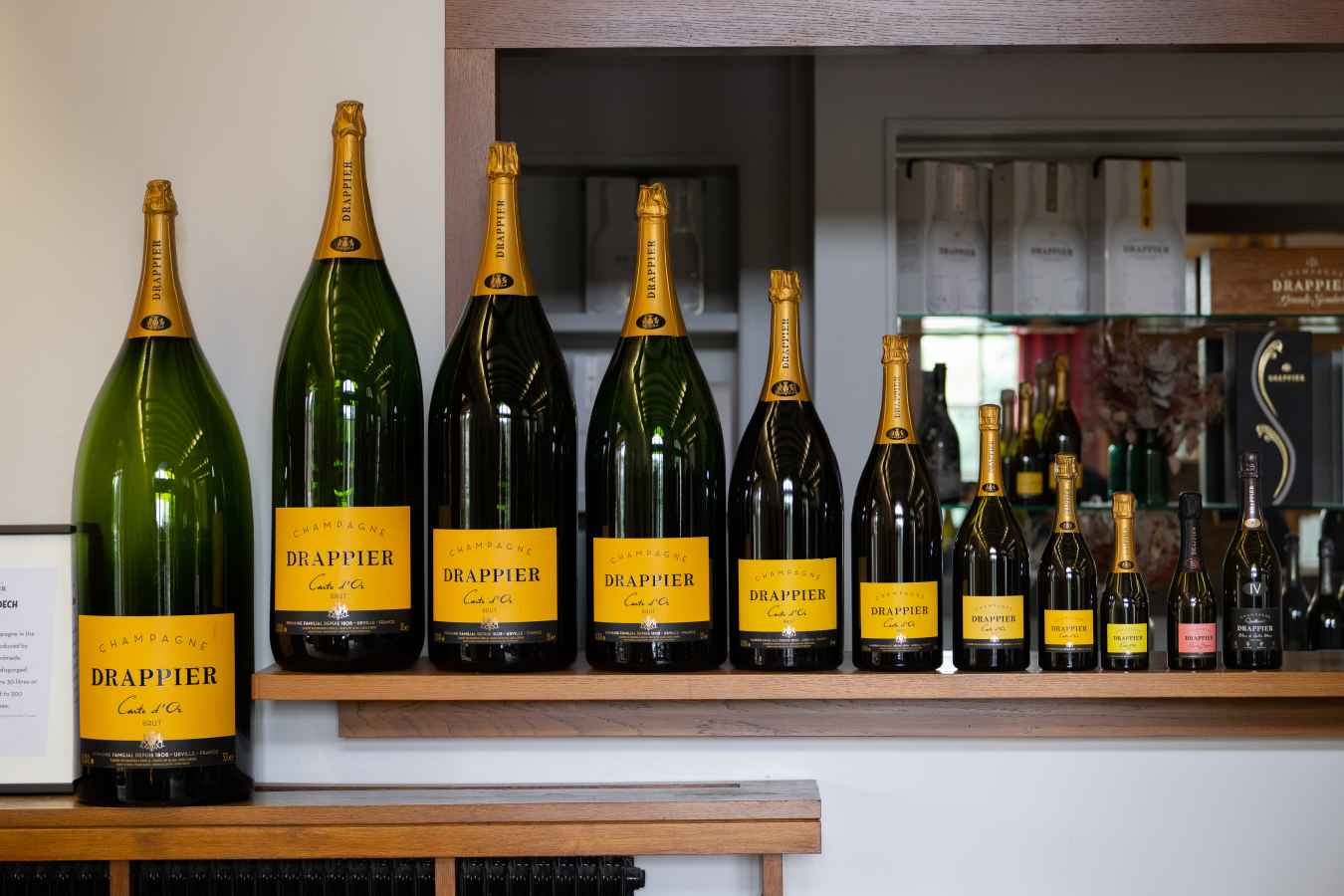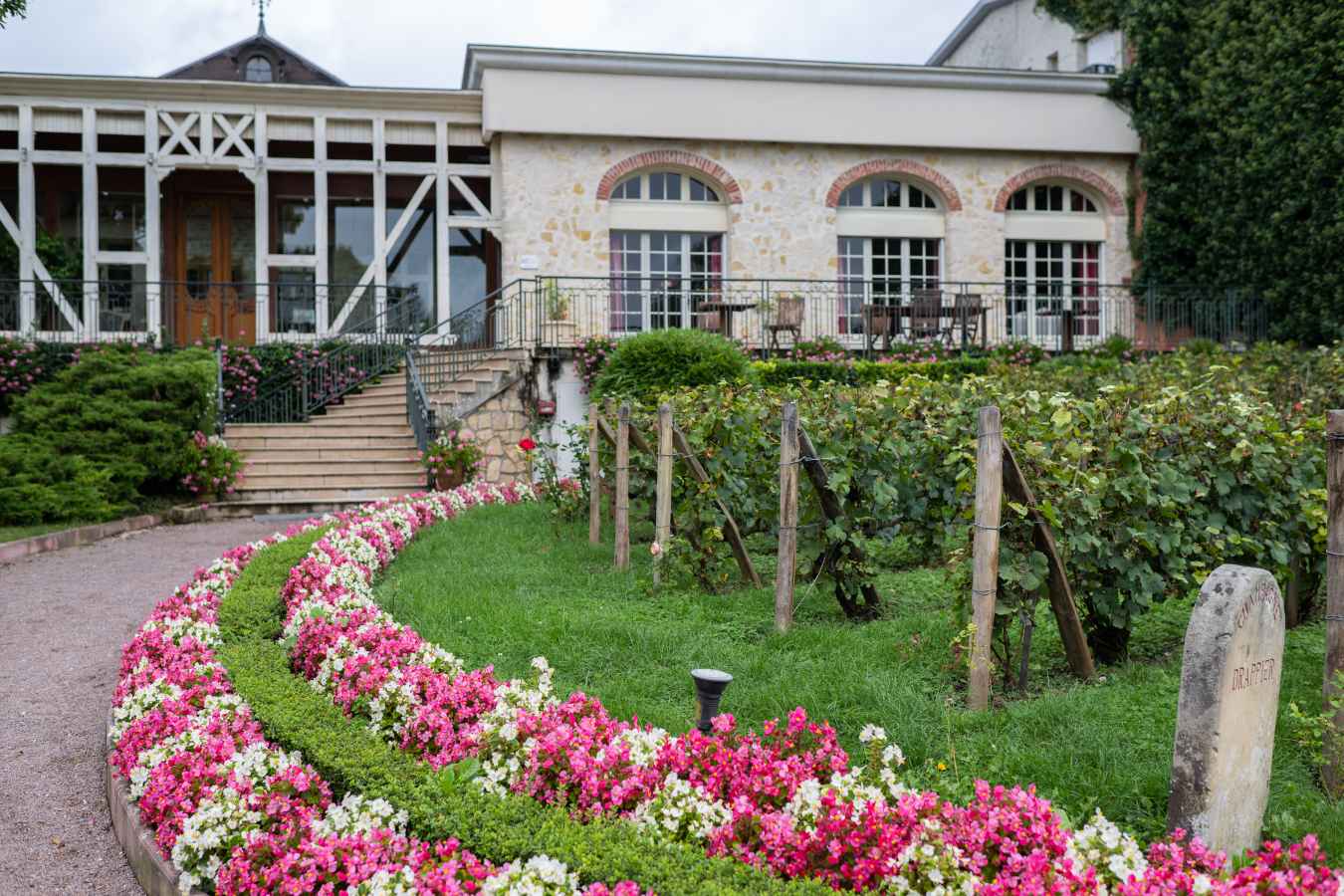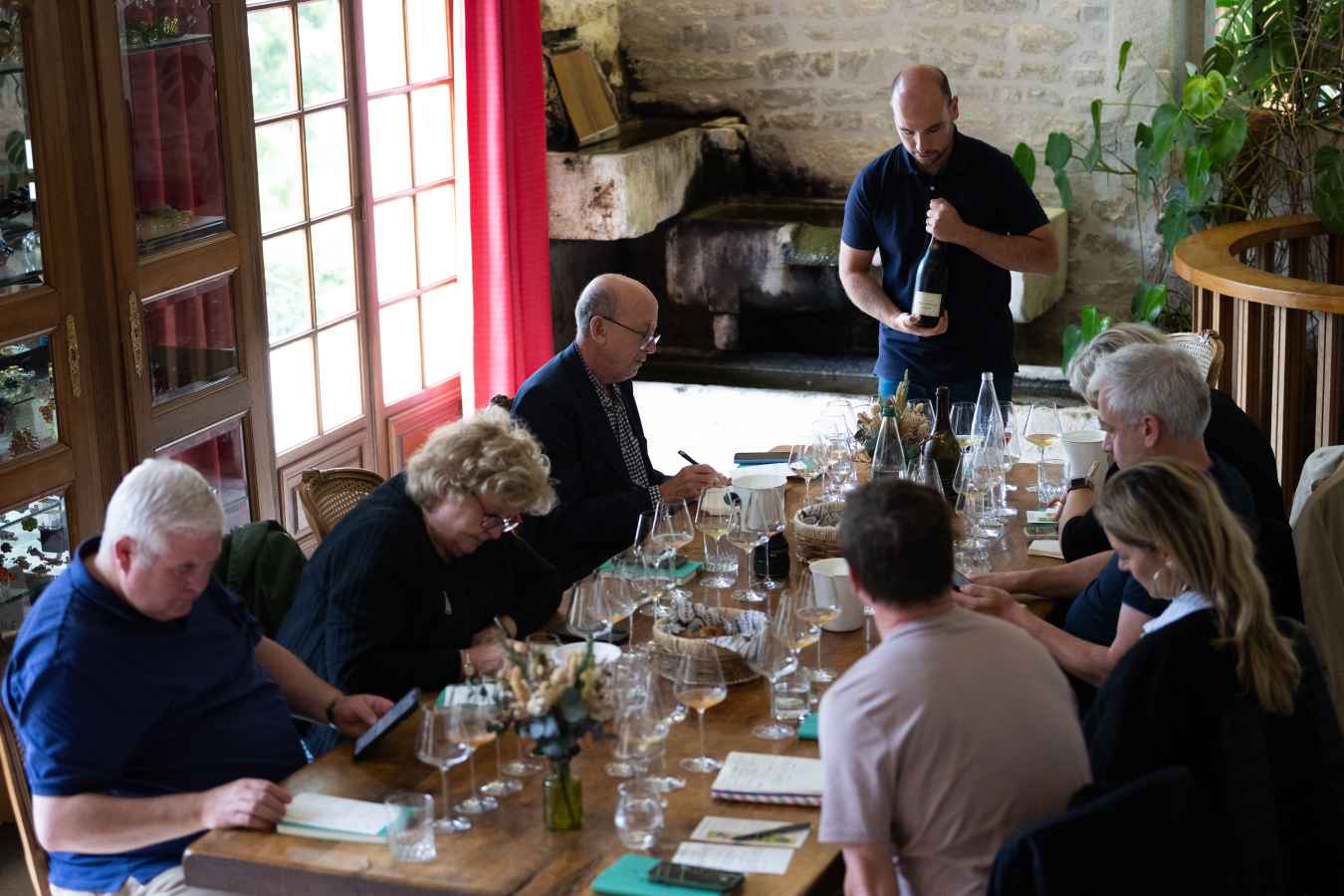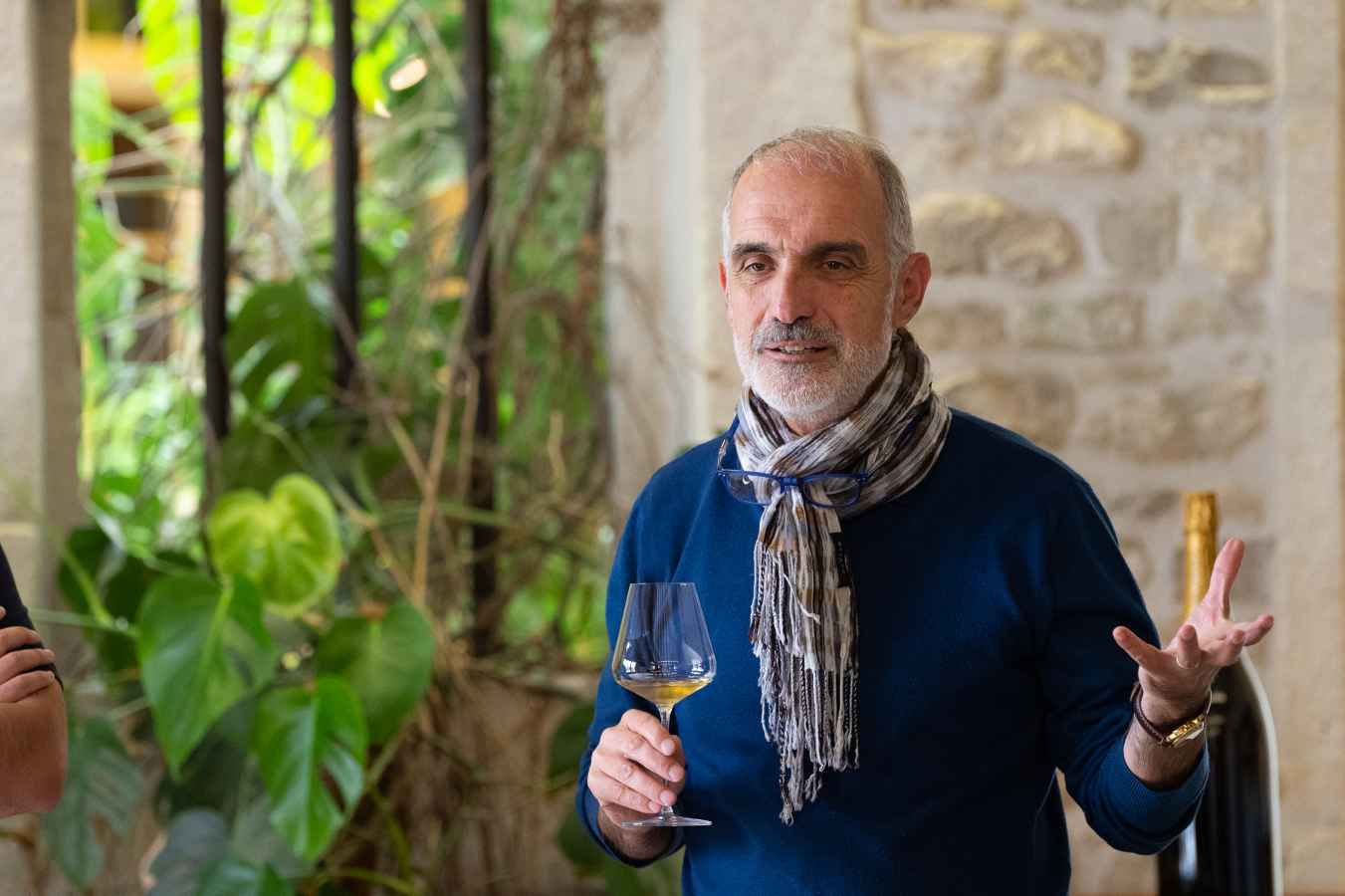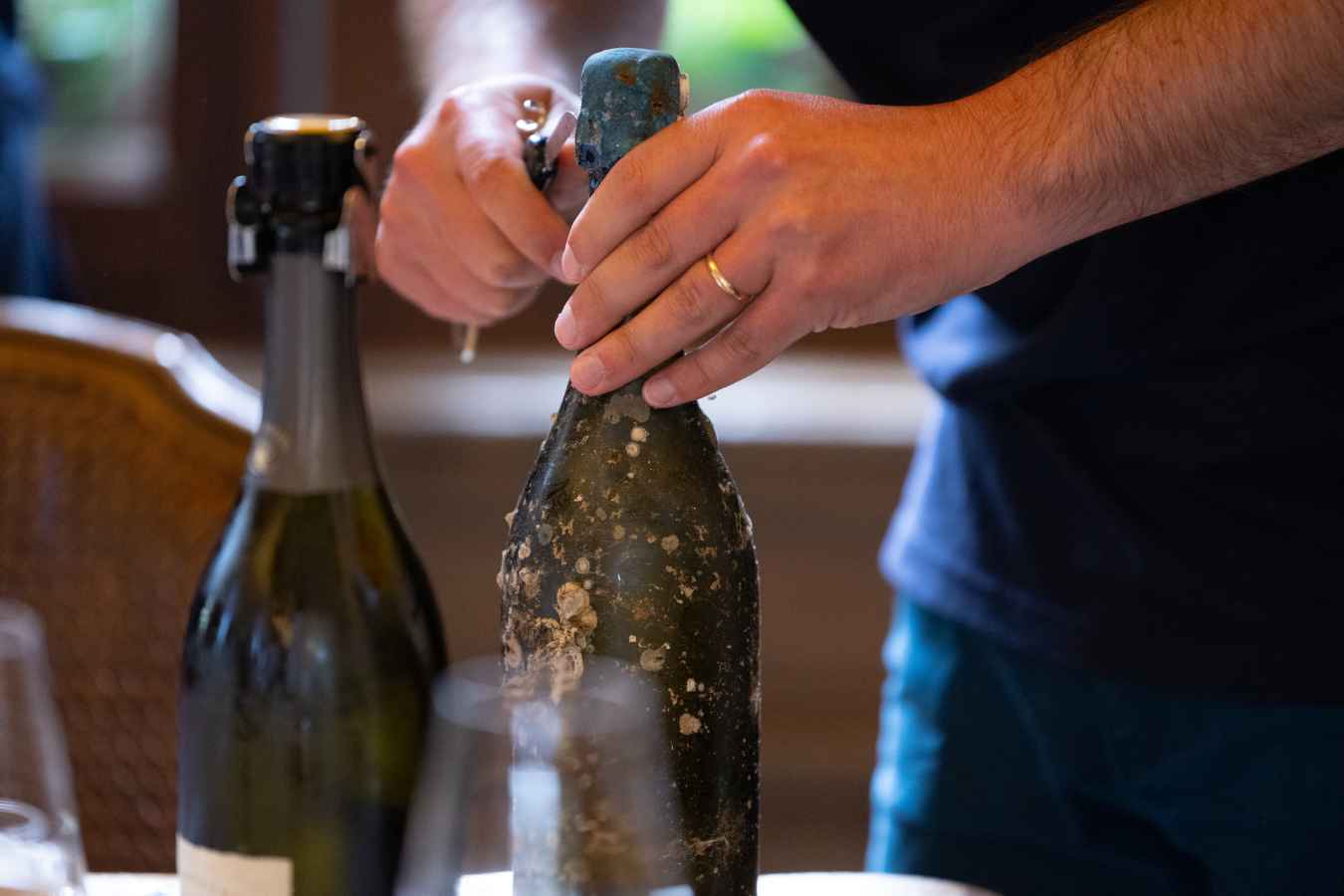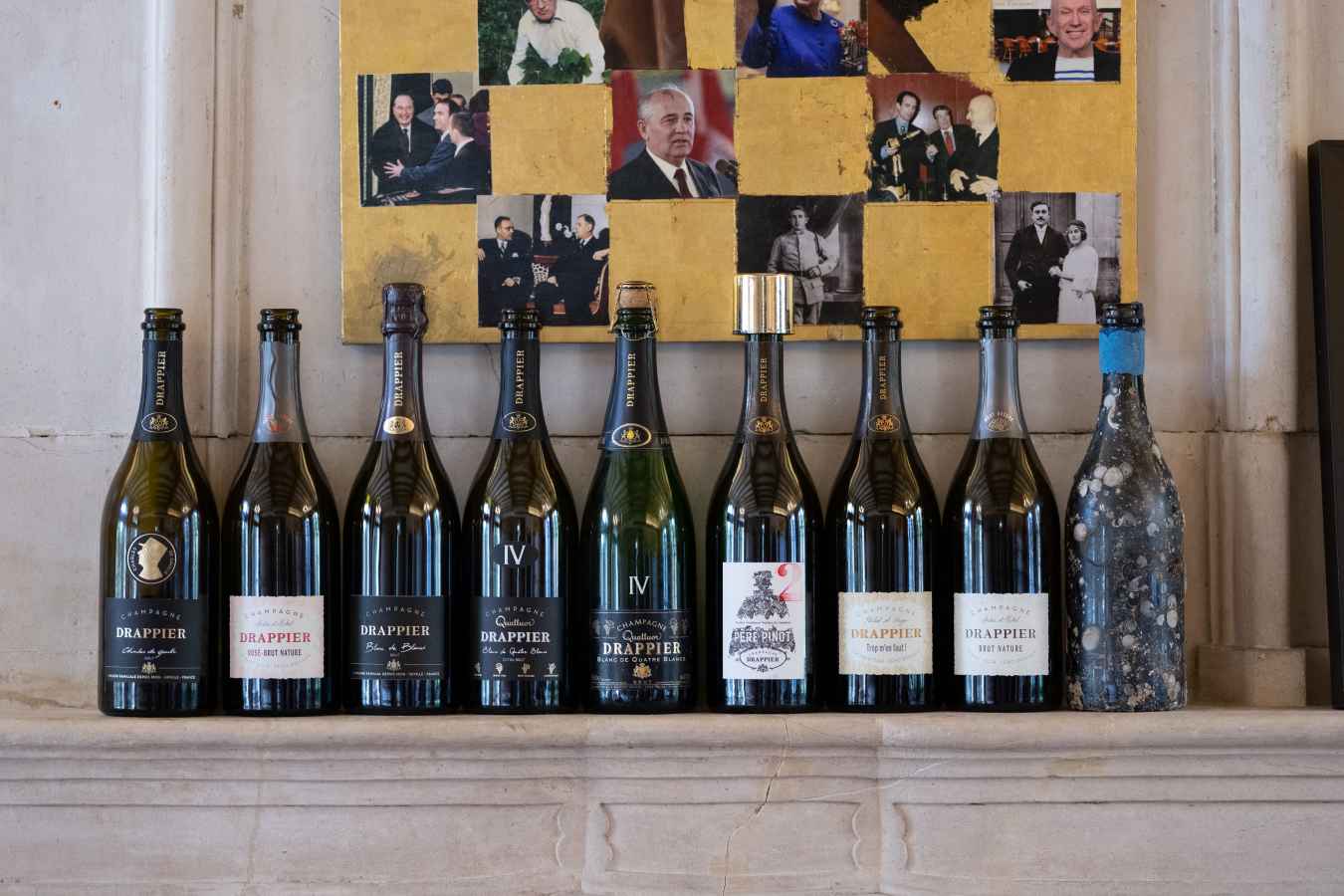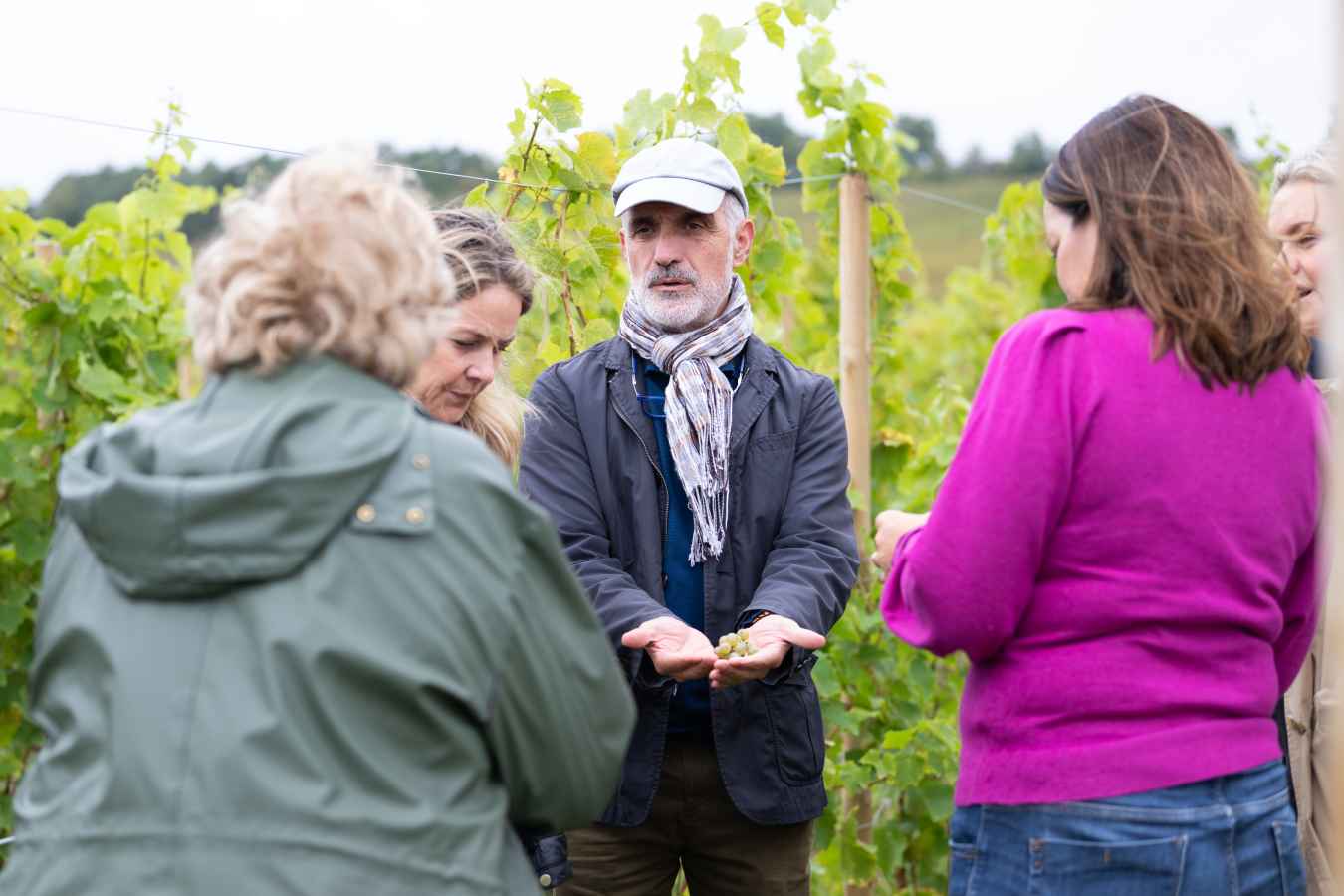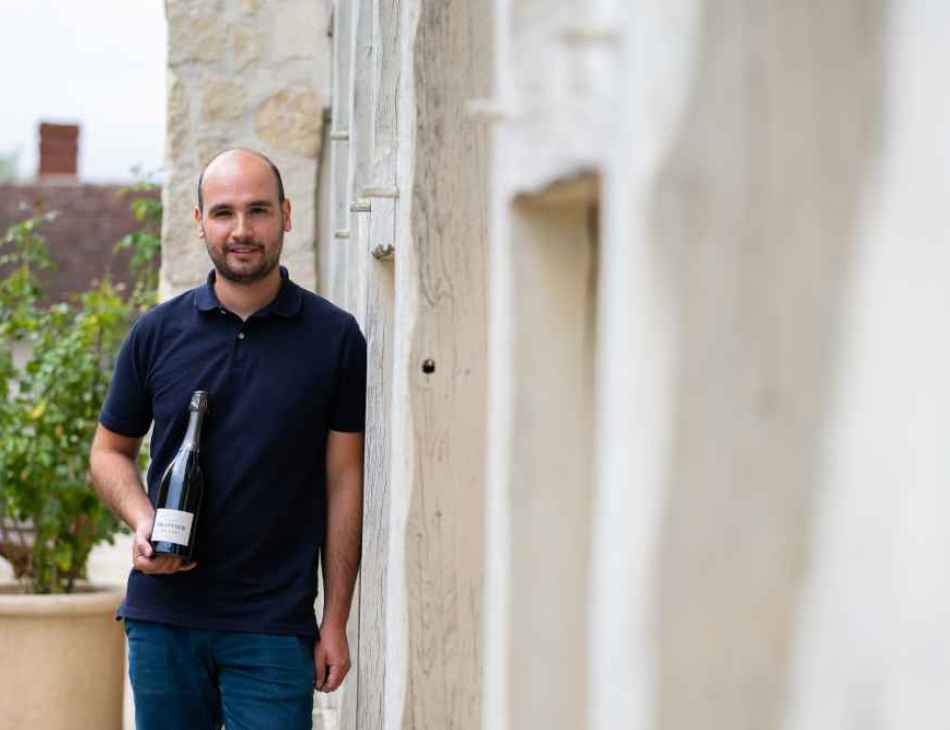Drappier: A Champagne House Rooted in Family Tradition
Hugo Drappier
If only Eurostar still stopped at Ashford International; it would have saved me countless hours over the past few months. However, stepping into the Business Premier lounge quickly put me at ease. Thanks to the iProov.me app, which streamlined the check-in process (so much so that the Business queue felt slow in comparison), I was able to relax before my journey. With Champagne Drappier awaiting me at my destination, enjoying a glass of bubbly at 6:30 a.m. felt perfectly justified. A few other of the invited guests joined me, as after all, who can resist a Champagne breakfast?
Our first stop was Paris, where we indulged in a traditional Parisian bistro lunch at Chez Michel, conveniently located near Gare du Nord. Before diving into a meal of snails, pâté, and duck confit, we were welcomed with a tasting led by Charline Drappier. Charline, who splits her time between Paris and the family estate in the Côte des Bar, just shy of Dijon, shared insights into their winemaking philosophy and the unique qualities they achieve through their evolution as a family-run Champagne House. From here we caught another train heading south, with obligatory bottles of Drappier of course to ensure our journey was comfortable.
Located in the heart of the Côte des Bar, Champagne Drappier is a historic, family-run house that traces its roots back to 1808. Over the centuries, Drappier has become renowned for producing expressive, terroir-driven champagnes with a focus on minimal intervention and sustainability. Led by the eighth generation of the Drappier family, the house combines tradition with modern innovation, creating wines that are both elegant and true to the land from which they come.
The vineyards are predominantly situated in Urville, a village that has a distinctive Kimmeridgian limestone soil, which is rich in fossilised seashells, as we were to see first-hand. This provides excellent drainage and imparts a minerality to the wines. This terroir, combined with the area’s warmer microclimate, allows Drappier to grow a higher percentage of Pinot Noir than is typically seen in Champagne (70% of their vineyards), resulting in rich, full-bodied wines that really sing to my palate. Additionally, they grow in Chardonnay and Pinot Meunier, along with rare, historic varieties like Petit Meslier and Arbane, reflecting their dedication to preserving the biodiversity of the region. It is this latter fact that really draws me into the house and family. I love those who steer away from tradition and create their own path.
The estate is certified organic, and the family employs numerous eco-friendly practices such as using lightweight bottles, solar energy, and natural pest control. Additionally, Drappier was the first Champagne house to eliminate sulfur dioxide (SO2) entirely in certain cuvées, including their Brut Nature Sans Soufre. They were the first in the region to install solar panels in 2007. Today, these generate about 75% of the energy required for the production of their Champagne. In 2016, it became the first ‘carbon neutral’ estate in the region
Drappier has invested in a 100% gravity-fed pressing system, which is a rarity in Champagne. This system allows the grapes to be gently pressed without the use of pumps, preserving the integrity of the fruit and minimising oxidation during the initial stages of production, all whilst saving electricity.
I don’t have a sweet palate, although I adore dessert and fortified wines. So the fact Champagne Drappier is known for its low dosage really appeals. Dosage refers to the final step before sealing the bottle, where a mixture known as the liqueur d’expédition is added. After the second fermentation and a period of bottle ageing, the Champagne undergoes disgorgement, where the yeast lees (sediment) are removed. At this stage, the winemaker adds the liqueur d’expédition to the wine, which is a mixture of still wine and sugar, which helps balance the acidity of the champagne. Some producers opt for no added sugar depending on the desired style. During our visit to the cellars, we saw first-hand a whole library of liqueur d’expédition that Champagne Drappier has to choose from when they do decide to use it.
This approach allows the wines to retain their natural acidity and reflect the authentic character of the grapes. The house's flagship wine, Brut Nature, exemplifies this philosophy. It is 100% Pinot Noir with a beautiful nose and colour from the skin. It has zero dosage and was disgorged 9 months before bottling. It was incredibly fresh, vibrant and fruity, with apricots and strawberries at the fore. We agreed that this is a gastronomic wine. As the wine developed the trademark quince notes started to show. Delicious.
Unlike many Champagne producers, Drappier takes pride in ageing its wines in large oak casks and using minimal filtration, which allows the natural flavours to fully develop. Their Grande Sendrée, one of the house’s most iconic cuvées, is a perfect example of this. Made from grapes harvested from a single vineyard, the wine is aged on the lees for several years, resulting in a complex champagne with notes of brioche, honey, and ripe fruit.
Unlike traditional wooden barrels, the concrete eggs used by Drappier don’t impart any oak flavours. This allows the pure character of the wine to shine through, offering a more transparent expression of the terroir and the grapes themselves.
Drappier uses grapes from old vines (some over 70 years old) in several of their cuvées. Old vines typically produce lower yields but result in more concentrated and complex flavours, contributing to the depth and character of the wines. These old vines are an integral part of Drappier’s most prestigious bottles. In the wake of phylloxera in the late 19th century, many Champagne vineyards were replanted with grafted American rootstocks to combat the disease. However, Drappier has begun replanting some of their vineyards with ungrafted, pre-phylloxera rootstocks, particularly for rare varietals like Arbane. This practice revives ancient viticulture traditions and offers a rare taste of Champagne’s pre-phylloxera era.
You don’t visit a Champagne house without food and incredible Champagnes being served. I am not going to write about all of them here, it would take 000’s words of tasting notes alone. That gets quite boring. Instead, I will reflect on the family, food and character of the people behind Champagne Drappier. We first met Hugo, the current winemaker at the train station. He had driven his father, Michels, beautiful classic Citreon DX to drive us to our hotel. Rather interestingly the village was the birthplace and burial ground for General Charles de Gaule. A solitary policeman stands guard during the day, in a sentry box ensuring the site is not vandalised. The local gendarmerie draws straws each morning to determine who works, what must be a boring shift.
Our hotel, in Colombey Les Deux Eglisee, housed a Michelin-starred restaurant, and it was here that we were to enjoy dinner in a private room with Michel and Hugo. Before I reminisce about the dinner, it would be remiss of me not to say how wonderful my suite was. It covered the entire length of the property, complete with a snug and large bathroom, with a free-standing classical bath. It was wonderful.
Our small intimate dinner was in the same room where French Presidents have sat, their exact place positioned so as not to be in the firing line of an assassin. The room could not have been more than 4m x 4m, yet the conversations held here must have been incredible. As were ours. In attendance were Hugo and Michel, both charismatic, charming and keen to share so much about their wines and philosophy.
Michel shared the story of how his grandparents began as grape growers before deciding to bottle their Champagne under their own name. The iconic Carte d’Or remains true to its original character, still dominated by Pinot Noir. The most notable change over the years has been the reduced dosage, aligning with modern tastes. If you’ve seen a bottle, you’ll recognize its distinctive yellow label—this wasn’t crafted by a branding agency or marketing team. Instead, it was chosen to reflect the colour of quince, a fruit abundant in the region. It’s said that their Champagnes mirror this, with a noticeable quince note that adds a unique flavour profile. Alongside this, it offers a beautiful depth, with rich tea-like notes. The wine benefits from extended lees ageing, 20 months, in this case, giving it extra complexity. Disgorged in February 2023 and aged for another year before release, the result is a Champagne with a lovely body, soft yet full of flavour.
During the meal, we also learned that since 2002, Champagne Drappier has been the official Presidential Champagne at the Élysée Palace, served on state occasions. It was even poured at the G8 summit that year. For a relatively small house, this is a remarkable achievement and speaks volumes about the esteem in which they are held. Their success isn’t just due to the exceptional quality of their wines but also to their engaging personalities. People often buy from people, and when you combine world-class wines with likeable characters and historic connections, it’s no surprise that this kind of recognition follows.
The Brut Nature Michel Drappier is 100% Pinot Noir, with a beautiful nose and colour from the skin. It has zero dosage and is incredibly fresh, vibrant and fruity. Apricots, strawberries and Quince were all in abundance. I found it to be exceptional and perfectly suited to food. It is a gastronomic Champagne. They had initially conducted trials in 1991, with the 1st release in 1992. This was in very small quantities though and it was not made commercially available until 1995. Before this, they had just labelled it as a Carte d’Or without dosage to a very select group of customers.
Champagne Drappier sources 40% of its grapes from vineyards that it directly owns, ensuring full control over the viticulture practices. The remaining 60% of their grape supply comes from carefully selected partner vineyards. Although these vineyards are not owned by Drappier, they are farmed to the house's strict specifications. This practice is common among Champagne houses and ensures consistency in quality and style across their range.
Drappier maintains close relationships with these growers, providing guidance on everything from vineyard management to harvest dates, ensuring the grapes align with the house's commitment to producing high-quality, sustainably grown Champagne.
They avoid adding sulfur (meaning a headache the following morning is less likely) and oxidation within the wines. In Champagne production, the addition of sulfur dioxide (SO₂) is common as it acts as a preservative, preventing oxidation and microbial growth, helping to stabilise the wine throughout its production and ageing. However, some producers opt for minimal or no added sulfur to create more natural, terroir-driven wines. The absence of sulfur allows the wine to express its purest flavours, giving a more vibrant, unfiltered experience. While this approach can result in more nuanced and lively wines, it also requires precise winemaking skills, as the wine becomes more susceptible to oxidation and spoilage without the protective effects of sulfur. I love Drappiers minimal intervention, as it gives a raw reflection of the region and vintage.
Part 2 of this article will follow soon.

